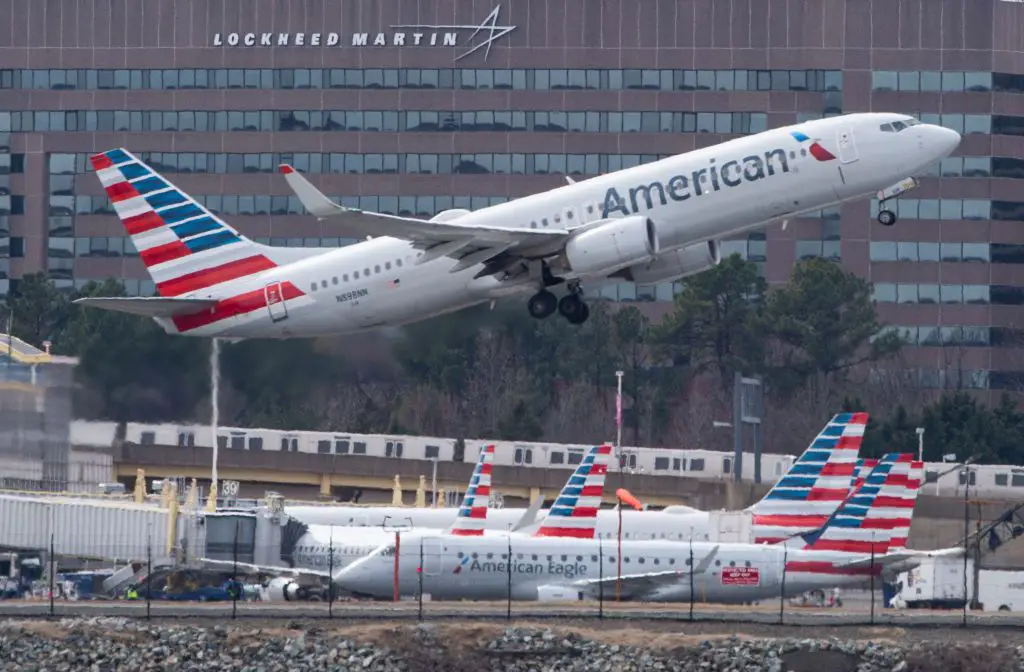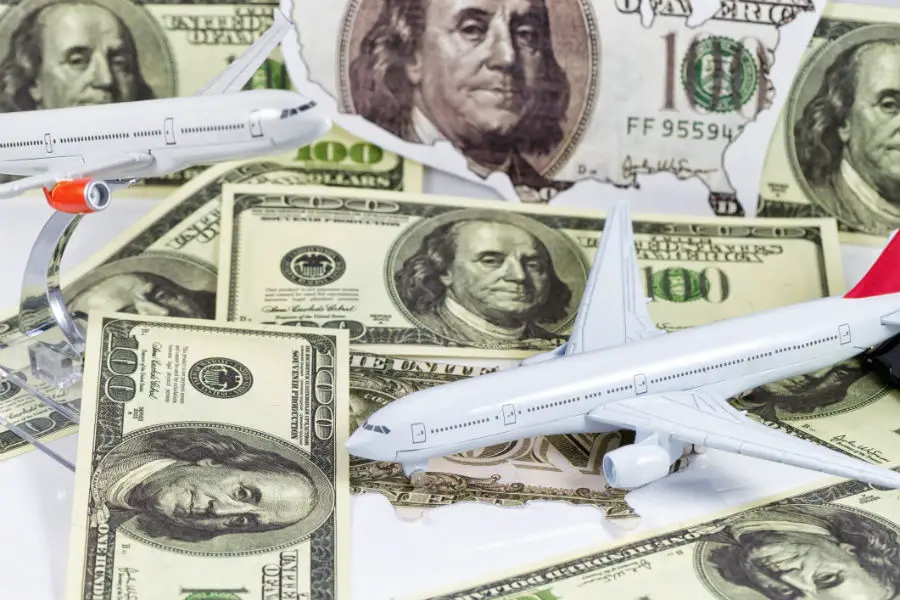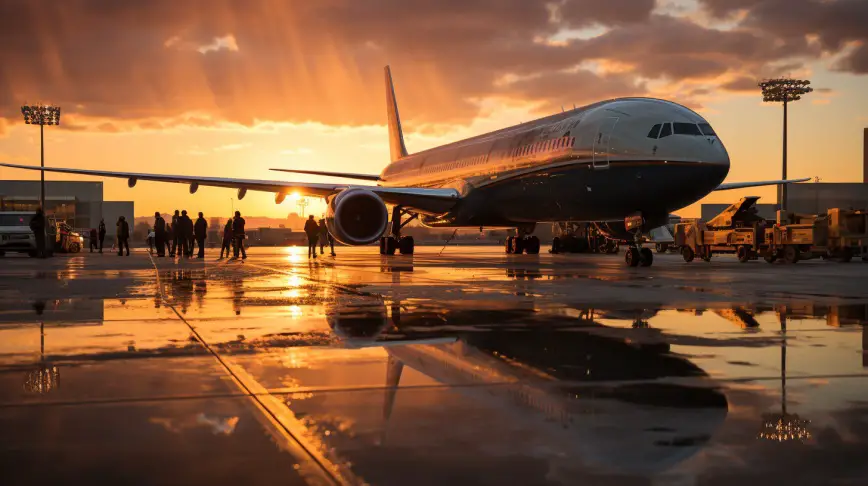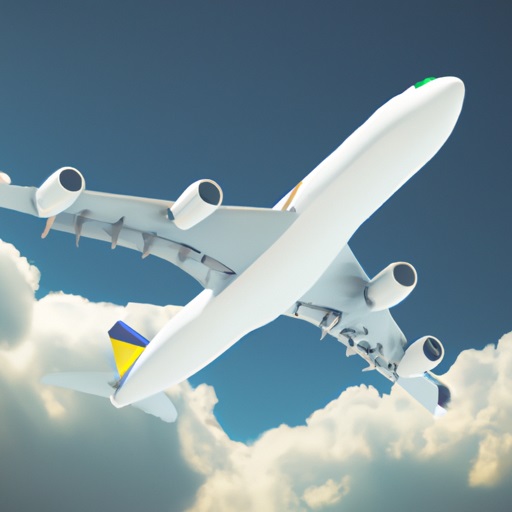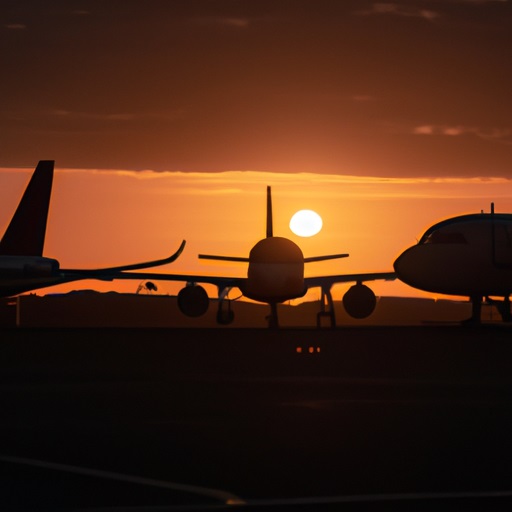
Airline Revenue Streams: Different Ways How Airlines Generate Revenue
The airline industry is one of the most competitive and challenging sectors in the world. With high operating costs, fluctuating fuel prices, and intense competition, airlines need to generate revenue from various sources to remain profitable. Understanding the different ways airlines generate income is crucial for investors, stakeholders, and passengers. In this article, we will explore the diverse revenue streams of airlines and highlight the importance of each source.
Ticket Sales
Ticket sales are the primary source of revenue for airlines. The amount of revenue generated by ticket sales depends on several factors, including demand, seasonality, competition, and the number of available seats.
When demand is high, airlines can charge higher prices for tickets. Conversely, during periods of low demand, airlines may lower ticket prices to attract more passengers. Seasonal factors, such as holidays and events, can also impact ticket prices.
Airlines offer different fare classes to cater to different types of passengers. These classes include economy, premium economy, business, and first class. Each fare class has a different price point and level of service. Airlines use yield management to maximize revenue by adjusting ticket prices based on demand for each fare class.
In recent years, airlines have also started charging for additional services, such as baggage, seat selection, and in-flight meals. This has allowed them to increase revenue and offset the rising cost of fuel and other expenses.
Ticket Pricing Factors
The following factors can influence airline ticket pricing:
| Factor | Description |
|---|---|
| Demand | The level of interest or desire for air travel at a particular time, which can fluctuate depending on season, holidays, or events. |
| Seasonality | The effect of yearly trends on airline prices, such as peak travel periods during holidays and summer. |
| Competition | The impact of rivals’ prices or promotions on ticket sales, which can cause airlines to adjust their pricing strategy accordingly. |
| Fare classes | The pricing tiers of airline tickets used to determine the level of service offered to passengers. |
Airlines also use revenue management systems to optimize ticket sales based on the above factors and others, such as booking date, customer loyalty, and flight duration.
Baggage Fees
One of the most significant sources of revenue for airlines are baggage fees. Over the years, airlines have introduced and increased various fees to supplement their income, including baggage fees. These fees have become an essential revenue stream for the industry, generating billions of dollars annually.
Ancillary revenue from baggage fees has become increasingly important for airlines, especially as ticket prices have become more competitive. Passengers are no longer willing to pay high fares, but airlines still need to generate income to cover their operational costs and make a profit.
| Baggage Policies | Fee Structure |
|---|---|
| Airlines have different policies when it comes to baggage allowances. Some airlines offer one or two pieces of checked luggage for free, while others charge for every bag. Carry-on luggage and personal items may also be subject to restrictions, which vary from one airline to another. | The fee for checked baggage also varies among airlines. Some airlines charge a flat fee, while others have a tiered system based on the number of bags and weight. Additional fees may apply for oversized or overweight bags. |
The introduction of baggage fees has been a controversial move for the industry, with some passengers feeling that airlines are nickel-and-diming them for every little thing. However, airlines argue that these fees are necessary to remain competitive and profitable.
The revenue from baggage fees has helped airlines to invest in new aircraft, upgrade their existing fleet, and improve onboard amenities. However, the introduction of these fees has also brought challenges to the industry, such as the increased need for baggage handlers and concerns about passenger satisfaction.
In conclusion, baggage fees have become an essential revenue stream for airlines, helping them to supplement their income, remain competitive, and invest in their operations. However, the introduction of these fees has also created challenges for the industry, requiring airlines to strike a delicate balance between generating revenue and maintaining customer satisfaction.
Ancillary Services
Airlines generate additional revenue through ancillary services, which are products or services offered to passengers for an extra fee beyond the base ticket price. These services are designed to improve the travel experience and provide more options for passengers. In recent years, ancillary revenue has become a critical component of airlines’ revenue streams.
Ancillary services can include:
- Onboard food and beverages
- Seat selection fees
- Premium seats with extra legroom
- Priority boarding
- Baggage fees
- In-flight entertainment
- Wi-Fi
- Travel insurance
By offering these services, airlines are able to supplement their revenue from ticket sales and increase their profitability.
Airlines also use yield management to maximize revenue from ancillary services. Yield management is a pricing strategy that involves adjusting prices based on the level of demand. For example, an airline may charge more for a premium seat during peak travel times than during off-peak times when demand is lower.
Importance of Ancillary Services
Ancillary services provide airlines with a way to differentiate themselves from their competitors by offering more options and a better travel experience to passengers. In addition, airlines can use ancillary services to target specific segments of travelers and generate additional revenue.
For example, business travelers may require Wi-Fi and priority boarding, while families may be willing to pay for extra baggage allowance or in-flight entertainment. Airlines can use data analytics to understand their customers’ needs and preferences and develop tailored ancillary services to meet those needs.
Ancillary services also help airlines to offset the cost of low-priced tickets, which are often offered to fill up planes during periods of low demand. By charging for ancillary services, airlines can generate additional revenue without raising ticket prices.
Strategies to Boost Ancillary Revenue
Airlines use various strategies to boost their ancillary revenue. One popular strategy is bundling, which involves offering packages that combine multiple ancillary services at a discounted price. Bundles encourage passengers to purchase multiple services at once, increasing revenue for the airline.
Airlines also use upselling and cross-selling to encourage passengers to purchase additional services. For example, during the booking process, passengers may be offered the option to upgrade to a premium seat or add extra baggage allowance. By making these options visible and enticing, airlines can increase the likelihood that passengers will purchase additional services.
In conclusion, ancillary services have become an integral part of airlines’ revenue streams. By offering services beyond the base ticket price, airlines can increase their profitability and provide a better travel experience for passengers. The key to success with ancillary services is to develop services that meet the needs and preferences of different customer segments and to use pricing strategies that optimize revenue.
Frequent Flyer Programs
Airlines use frequent flyer programs to generate revenue and cultivate customer loyalty. These programs allow customers to accumulate points or miles for every flight they take, which can be redeemed for free or discounted flights, upgrades, and other perks.
The different tiers of frequent flyer programs offer various benefits, such as priority boarding, lounge access, and waived fees. The revenue generated from frequent flyer programs comes not only from ticket sales but also from partnerships with credit card companies, hotels, car rental agencies, and other businesses.
The revenue-sharing arrangements between partner airlines also contribute to the overall revenue generated through frequent flyer programs. Airlines have invested in these programs because they have proven to be a successful tool for retaining customers, promoting loyalty, and generating revenue.
Cargo and Mail
While ticket sales and ancillary services constitute a significant portion of airlines’ revenue, carrying cargo and mail is another important revenue stream. Airlines transport a wide variety of goods, including perishable products, electronics, and even live animals.
The logistics of air cargo operations involve careful coordination between airlines, freight forwarders, and customs authorities. Airlines must ensure that cargo is safely and efficiently transported between different airports around the world.
Carrying mail is also an essential part of many airlines’ revenue streams. Airlines transport mail on behalf of national postal services, generating revenue through contracts with these organizations.
| Challenges and Opportunities |
|---|
|
Codeshare Agreements
Airlines often enter into codeshare agreements to expand their network and generate additional revenue. Codesharing allows airlines to sell tickets on each other’s flights, giving passengers access to a wider range of destinations. In a codeshare agreement, one airline (the operating carrier) operates the flight while the other airline (the marketing carrier) sells tickets for that flight under its own flight number.
Codesharing provides several benefits for both airlines and passengers. Airlines can increase their reach without having to invest in new routes or aircraft, while passengers can enjoy more convenient travel options. Codesharing also enables airlines to offer more frequent flights, better flight connections, and access to airports and destinations not served by their own aircraft.
Revenue Sharing
Codesharing also involves revenue sharing between partner airlines. The operating carrier typically receives a share of the ticket revenue from the codeshare flight, while the marketing carrier earns a commission or a percentage of the revenue generated from ticket sales. Revenue sharing can be based on a fixed fee or a percentage of the revenue generated by the codeshare flight.
Codeshare agreements are common among major airlines and are often part of larger alliance networks, such as Star Alliance, SkyTeam, and Oneworld. These networks offer passengers even more options for travel, with codeshare agreements among multiple airlines within the alliance.
Aircraft Leasing
Airlines can generate revenue by leasing aircraft instead of purchasing them outright. Aircraft leasing allows airlines to expand their fleet without committing to long-term debt or tying up capital. Aircraft leasing can also provide flexibility in terms of aircraft size, type, and number depending on the airline’s needs and the market demand.
There are different types of aircraft leasing agreements, each with its own financial impact on airlines. Operating leases allow airlines to lease an aircraft for a short period, usually less than ten years. The lessor retains ownership of the aircraft and is responsible for maintenance, insurance, and taxes. Airlines can benefit from lower lease rates and flexibility in adjusting their fleet size and composition. Finance leases, on the other hand, are long-term leases that can span the entire life of an aircraft. The lessee takes on most of the responsibilities of ownership, including maintenance, insurance, and taxes. Airlines can benefit from lower lease payments but must consider the long-term financial impact of the lease.
Aircraft leasing has become increasingly popular in recent years, with more airlines opting to lease aircraft instead of purchasing them. In 2020, approximately 42% of the world’s commercial aircraft were leased, with the Asia-Pacific region accounting for the highest share. By leasing aircraft, airlines can focus on their core business of flying passengers and cargo while leaving the challenges of aircraft ownership to the lessor.
Inflight Retail
One of the additional revenue streams for airlines is inflight retail sales. Airlines offer a variety of products and services onboard, including duty-free items, cosmetics, and merchandise.
Passengers often have a captive audience during their flights, making it an ideal opportunity for airlines to boost their revenue through onboard sales. The convenience factor of purchasing products onboard the aircraft also appeals to many travelers.
Many airlines employ strategies to increase their inflight retail revenue, such as offering promotions or discounts for certain products, or showcasing new and exclusive products. In some cases, airlines partner with well-known brands to offer their products exclusively onboard.
Inflight retail revenue may not be a significant portion of an airline’s overall revenue, but it is still a profitable source of income for many airlines. In 2019, inflight retail sales generated an estimated $3.4 billion in revenue for airlines worldwide.
Charter Flights
Charter flights are becoming an increasingly popular way for airlines to generate additional revenue. In simple terms, charter flights involve an airline leasing an entire aircraft to a customer for a specific purpose. This can range from corporate events and business travel to sports team transportation and group travel.
Charter flights have several advantages for airlines. Firstly, they guarantee revenue as the entire aircraft is paid for upfront. Secondly, they allow airlines to utilize their fleet more efficiently, particularly during off-peak periods. Finally, charter flights provide airlines with an opportunity to attract new customers and broaden their customer base.
However, operating charter flights also comes with its challenges. Airlines need to ensure that the terms of the charter agreement are agreeable to both parties, including the flight schedule, aircraft maintenance, and safety requirements. Additionally, airlines need to have the appropriate infrastructure in place to handle charter operations and ensure that the flight crew is properly trained for the specific requirements of the charter.
Despite these challenges, the revenue generated through charter flights can be significant for airlines. It provides them with a unique opportunity to diversify their revenue streams and cater to a wider range of customers.
Maintenance and Repair Services
Airlines generate revenue not only through passenger transport but also through maintenance and repair services. A well-maintained aircraft is vital for safe and efficient operations, and airlines’ maintenance divisions provide a multitude of services for their own and other airlines’ aircraft.
Maintenance and repair services are divided into two categories: line maintenance and heavy maintenance. Line maintenance includes routine checks and minor repairs, such as changing engine oil or fixing a broken cockpit window. Heavy maintenance involves more extensive work, such as overhauling engines or replacing major aircraft components.
Airlines often outsource maintenance and repair services to third-party providers, although some have their own in-house maintenance divisions. Outsourcing allows airlines to save on costs and focus on their core business of passenger transport.
Proper maintenance and repair services are crucial for airline revenue streams. Unscheduled maintenance can cause flight delays or cancellations, leading to revenue loss and dissatisfied passengers. Airlines that invest in top-notch maintenance and repair services can improve their operational efficiency, reduce maintenance costs, and increase overall revenue.
Insurance Services
Airlines generate revenue through insurance services offered to passengers. Travel insurance is a crucial component of ancillary revenue and enhances customer experience. In addition to travel insurance, airlines also provide various forms of coverage, including trip cancellation insurance, flight accident insurance, and baggage insurance, among others.
Passengers can purchase insurance at the time of booking or during check-in. Airlines partner with insurance companies to provide coverage to passengers. Insurance revenue is usually a small percentage of airlines’ overall revenue, but every bit counts.
Insurance coverage for passengers provides a level of comfort and peace of mind, especially when unexpected events occur. Airlines benefit from selling insurance to passengers because it supplements their primary source of revenue.
Did you know? Airline insurance premiums for passengers depend on different factors, including age, travel destination, trip duration, and coverage limit.
Advertising and Sponsorship
Airlines generate revenue through advertising and sponsorship deals with various businesses and organizations. By promoting products or services through advertising channels and sponsoring events, airlines can expand their reach and generate additional income.
Advertising Channels
Airlines utilize various channels to advertise products and services to their customers. Onboard magazines, in-flight entertainment systems, and exterior aircraft branding are some of the most common advertising channels used by airlines. Airlines can also offer advertising space on their website and mobile app, as well as social media pages to promote their partners.
| Advertising Channels | Description |
|---|---|
| Onboard Magazines | Airlines offer advertising space in their onboard magazines, which usually feature articles on travel, lifestyle, and entertainment. |
| In-flight Entertainment Systems | Airlines can display ads on seatback screens or offer sponsored content for passengers to view during their flight. |
| Exterior Aircraft Branding | Airlines can offer to brand their aircraft with a sponsor’s logo or design, providing high visibility for the sponsor and generating revenue for the airline. |
Sponsorship Deals
Airlines also enter into sponsorship deals with various organizations, such as sports teams, events, or celebrities, to expand their brand and generate revenue. These deals can include in-game branding, product placements, and VIP experiences for customers.
“Sponsorship deals can be a win-win for both airlines and sponsors. Airlines gain exposure and revenue, while sponsors gain access to a captive audience.”
Some airlines even offer co-branded credit cards with other companies, such as hotels or financial institutions, to incentivize customers to earn miles and generate additional revenue. These partnerships can also include joint promotions or discounts for customers.
Airline Revenue Streams FAQ
What are the main sources of income for airlines?
Airlines generate revenue through various sources, such as ticket sales, baggage fees, ancillary services, frequent flyer programs, cargo and mail transportation, codeshare agreements, aircraft leasing, inflight retail, charter flights, maintenance and repair services, insurance, and advertising.
How much of an airline’s revenue comes from ticket sales?
Ticket sales constitute a significant portion of airlines’ revenue, typically ranging between 70-80% of the total revenue.
How do airlines determine ticket prices?
Ticket prices are determined based on various factors such as demand, seasonality, competition, operating costs, and yield management. Airlines use sophisticated algorithms and revenue management strategies to maximize their revenue from ticket sales.
What is yield management?
Yield management is the practice of optimizing pricing and inventory for maximum revenue. Airlines use sophisticated algorithms to predict demand and adjust pricing accordingly to sell the right seat to the right customer at the right price.
What are ancillary services?
Ancillary services are additional services offered by airlines, such as onboard food and beverages, Wi-Fi, seat selection, priority boarding, and in-flight entertainment, among others. These services generate additional revenue for airlines and supplement their ticket sales revenue.
What are frequent flyer programs?
Frequent flyer programs are loyalty programs offered by airlines to incentivize customers to fly with them repeatedly. These programs offer various tiers of benefits, such as priority boarding, lounge access, free baggage allowances, and upgrades, among others.
How do airlines generate revenue through cargo and mail transportation?
Airlines generate revenue by transporting cargo and mail, typically on their passenger flights or dedicated cargo planes. This revenue stream is significant for some airlines and is managed through separate divisions and partnerships with cargo operators.
What are codeshare agreements?
Codeshare agreements are partnerships between airlines to share their flight codes on certain routes, thus expanding their network and offering more choices to customers. These agreements also allow airlines to generate additional revenue through revenue-sharing arrangements.
What is aircraft leasing?
Aircraft leasing is the practice of leasing aircraft from third-party leasing companies instead of purchasing them outright. This allows airlines to operate a fleet of aircraft without incurring the significant costs of purchasing and maintaining them.
What is inflight retail?
Inflight retail refers to the sale of duty-free items, merchandise, and other products and services onboard flights. Airlines use various strategies to boost inflight retail revenue, such as offering limited-time promotions and partnering with popular brands.
What are charter flights?
Charter flights refer to the practice of chartering an entire aircraft for specific purposes, such as corporate events or sports teams. These flights generate revenue for airlines and offer a flexible and customized travel experience for customers.
How do airlines generate revenue through maintenance and repair services?
Airlines generate revenue through maintenance and repair services by offering these services to other airlines or selling spare parts and components to aircraft manufacturers and operators. This revenue stream is significant for some airlines and is managed through separate divisions and partnerships with maintenance providers.
What are insurance services offered by airlines?
Airlines offer various insurance coverage options to their passengers, such as trip cancellation insurance, medical insurance, and baggage loss insurance, among others. These services generate additional revenue for airlines and offer passengers peace of mind while traveling.
How do airlines generate revenue through advertising and sponsorship?
Airlines generate revenue through advertising and sponsorship by offering various channels for advertisers to reach their audience, such as onboard magazines, in-flight entertainment systems, and exterior aircraft branding, among others. Airlines also partner with sports teams, events, or celebrities to boost their brand and generate additional revenue.
In this part of the series, we’ll look at the main services and categories that add to American Airlines’ (AAL) revenues. The major component of revenues still ...
Airlines moved around their capacity accordingly and pulled down in markets where they were historically weak. Combined, these results show that airlines saw ...
The e-commerce juggernaut is creating a split two-tier system between those airfreight businesses that are well-prepared to grab a healthy slice of the booming ...
American Airlines is the largest airline in the world in terms of fleet size, revenues generated as well as passengers carried. In 2018, it operated 956 ...
Travel executives need to find alternative routes toward building goodwill and customer loyalty within their respective bases. Airlines that create ancillary ...
Business travelers account for 12 percent of airlines' passengers, but they are typically twice as lucrative – accounting for as much as 75% of profits. ...
American Airlines Group Inc. provides air transport services for passengers and cargo. Its wholly-owned subsidiary American Airlines Inc. is a global network ...
Growing your booking value in the airline industry involves increasing the revenue coming from ancillaries. Airlines have been exploring different ways to do ...
The airline industry is one of the most competitive and challenging sectors in the world. With high operating costs, fluctuating fuel prices, and intense ...
Airline passengers represent a huge potential market for food, insurance, package tours, and other products that are adjacent to the core product of a seat in ...
What’s included in the fares consumers pay for airline tickets has become a can of worms over the last few years. What presents itself to the consumer as a ...
Airline digital retailing post-covid-19 will introduce new revenue models across airline eCommerce. From flight shopping to loyalty programs, airlines are ...
In today's aviation industry, airlines face numerous challenges. To survive and thrive, airlines must adapt by exploring alternative revenue sources and ...








